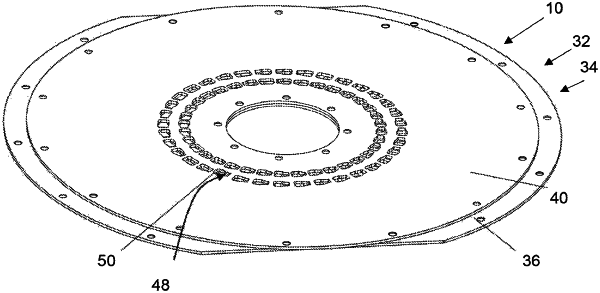| CPC H02K 15/0087 (2013.01) [H02K 3/12 (2013.01); H02K 3/50 (2013.01); H02K 15/085 (2013.01)] | 9 Claims |

|
1. A positioning and clamping device for positioning and clamping at least one wire end for further processing during production of a machine element of an electric machine, the positioning and clamping device being movable relative to the machine element from which the at least one wire end protrudes and comprising:
a capturing device configured to capture and position the at least one wire end, wherein the capturing device has at least one oblique guide configured, during a relative movement in a circumferential direction of the positioning and clamping device, to guide the at least one wire end in a radial direction,
wherein the capturing device has a first element with a plurality of first recesses arranged in a plurality of concentric rings and a second element with a plurality of second recesses arranged in a plurality of concentric rings,
wherein the first and second elements can be moved relative to each other,
wherein a first recess from the plurality of first recesses and a second recess from the plurality of second recesses overlap each other at least partially in such a way that the at least one wire end can be received within the recesses and rims of the recesses move closer towards or apart from each other during the relative movement of the first and second elements,
at least one first rim of the first recess extending at least partially obliquely in a radial direction;
at least one first rim of the second recess extending at least partially obliquely,
wherein the at least one first rim of the first recess and the at least one first rim of the second recess overlap when viewed through the first and second recesses,
wherein the first and second recesses overlap each other at least partially in such a way that only a single pair of wires can be received within the recesses, and,
each recess having a contour completely formed by the first element or the second element such that the contours of the recesses are not connected.
|